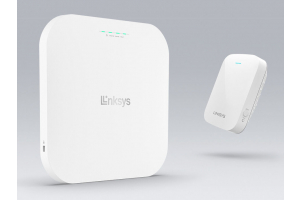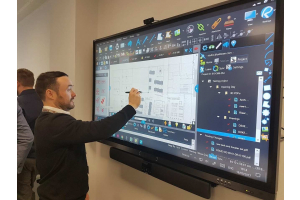What are Servers & Major Types of Server Hardware
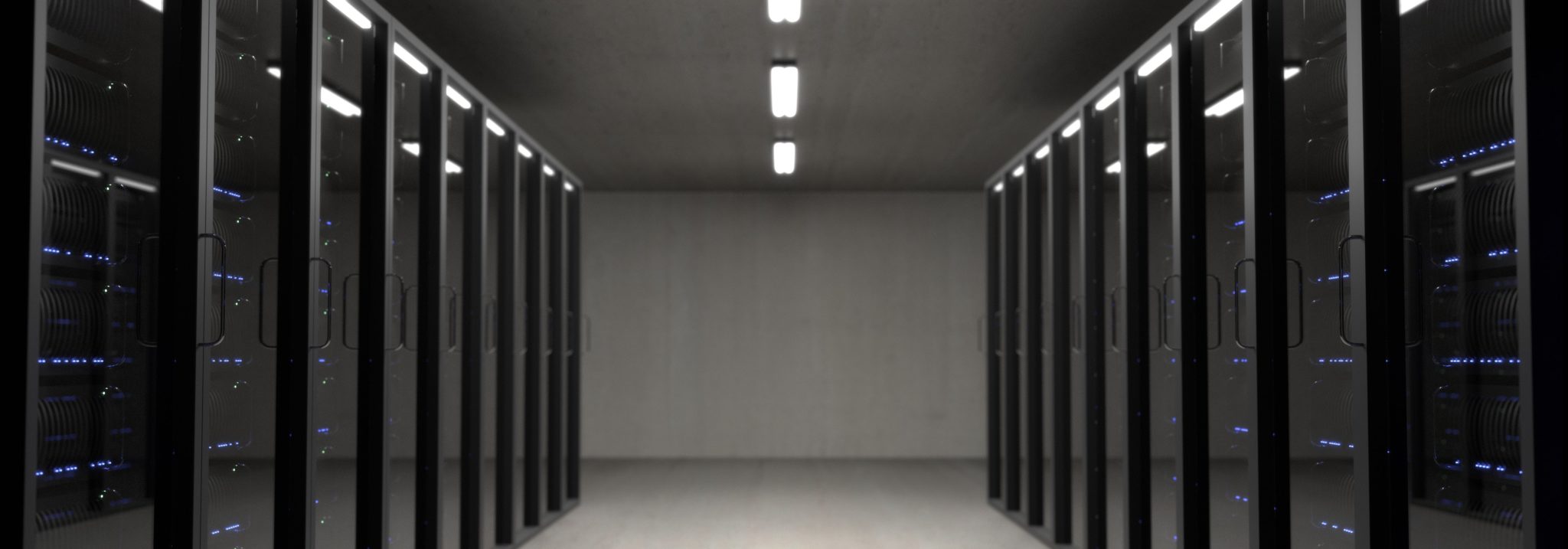
Table of Content
Fundamentals What are Servers:
In simple words, Servers are types of computers that receive and respond to requests made by the client system over the network. Servers can be hardware or software and it provides processing and memory resources to manage workloads of various nature. These are generally deployed to carry out the functions of data protection, centralization of resources, enablement of remote working, hosting of applications, management of files, processing of emails, media streaming, printing, and other useful operations essential for efficient workflow in SMEs and larger enterprises. The power and versatility of servers offer many advantages to businesses and they instantly go for servers when there arises a need of setting up new data centers, expanding the existing ones or establishing a new satellite office for remote working. Because of the strategic advantages that servers provide to companies, installation and management of servers have become an inevitable necessity for any corporation no matter public or private.
From a hardware point of view, it is hard to differentiate servers from Personal Computers(PCs). Both are equipped with the same components like power supplies, CPUs, and other peripherals, but components used in server hardware are way more advanced and updated and they are equipped with hot-swappable components. Depending upon the workloads, space and budgetary constraints, Form Factors (physical dimensions and standards) of servers could be in three forms: tower, rack, blade, and mainframe:
I. Tower Servers
Similar to tower-style PCs, the tower servers come in the form factor of the upright, standalone cabinet. They are bulkier and occupy more space than their counterpart rack or blade servers. If space is not your restraint and you are looking for server solutions to cater to the needs of smaller businesses with limited financial resources, you must opt for the option of tower servers.
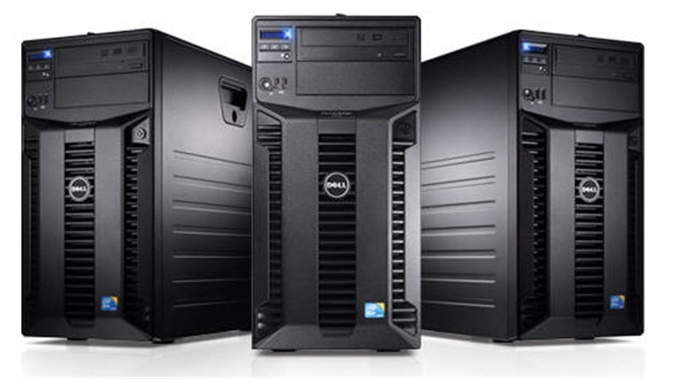
Tower servers can have both pros and cons:
- Since these types of server hardware have lesser component density, it is easier to cool them.
- They weigh more than a set of rack servers and larger enterprises don’t use them because their cooling system makes more noise, which is an irritant in the smooth workspace.
- The cabling of these servers is a very complicated process. Contrary to rack or blade servers, tower servers don’t provide features for cabling options. So cabling becomes a messy and time-consuming process.
- They are deployed for small data centers for finding server solutions for not very processor-heavy tasks.
- With tower servers, scalability and expansion would be very difficult.
II-Rack Servers:
Rack servers or rack-mounted servers are designed to accommodate multiple servers and fit into smaller spaces to facilitate unified management. They are constructed in such a way that one server can be stacked right on the other in a framework called a rack. The serves are installed on multiple mounting slots which are known as bays. Rack servers offer an all-around computing role, thereby supporting multiple workloads simultaneously.
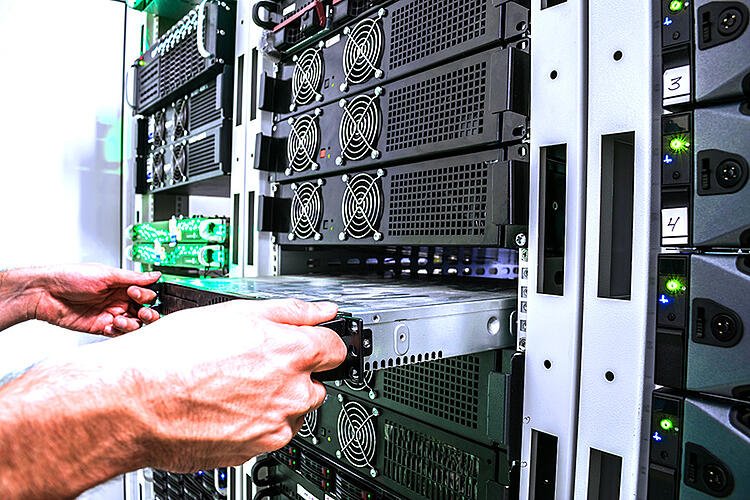
They have both advantages and disadvantages.
- Since the size and shape of rack servers are standardized, therefore adding new servers from different vendors and updating existing ones becomes very easy.
- They provide the feature for cable management. Though the situation is not as messy as that of tower servers, it is still a daunting task as rack servers are tethered to power supplies, networking equipment, storage devices and other peripherals.
- The fact that servers are mounted on one another, a special cooking system has to be deployed to prevent excessive heating. Therefore, it is a comparatively expensive form of server hardware. It can cost 30% more as compared to tower servers with the same specifications. Heat dissipation is one serious handicap, that’s why only medium and larger enterprises can afford this type of server solution.
- Better organization of space, customization, improved data security, and maintenance ease are also some important benefits that can accrue in case you go for rack servers.
III. Blade Servers:
Blade servers are advanced versions and these are generally deployed by larger enterprises for carrying out large-scale computing like the one which is performed in telecommunication, banking or other financial fields. Blade servers are very compact devices that house thin and modular EC boards termed blade servers. Each blade is in fact a server often dedicated for particular applications like networking, storage, the management or other specific task management applications. Blade servers are servers built on a card because processors, memory, and integrated network controls are mounted onto them.
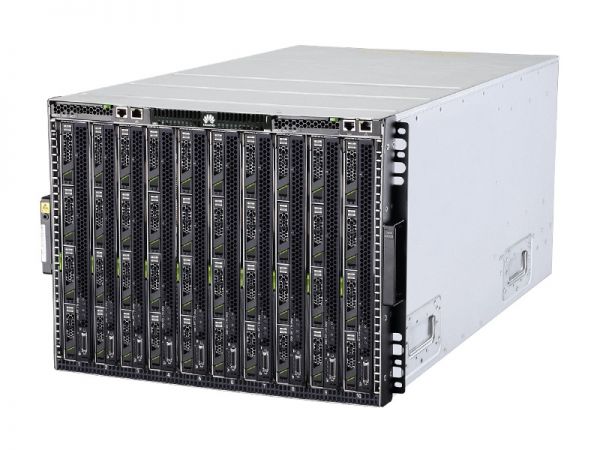
- Since each blade or server is dedicated to a single application, it empowers admins to control access to servers and data distributions among various network devices.
- Blade servers provide greater processor density, better cable management, minimal power consumption and optimal storage consolidations.
- One downside of blade servers is that these are vendor proprietary. In other words, you cannot simply insert the Dell PowerEdge MX blade server into the HPE Blade System Enclosure. The upgradation should only be carried out with blade servers of existing vendors.
IV. Mainframe servers
Mainframe servers are extremely powerful and they have been designed to cater to the needs of high-volume data-intensive workloads with simultaneous billions of transactions. So much so that some mainframe server systems can perform 12 billion encryption transactions per day. Their reliability is matchless in the market because they are equipped with multiple layers of redundancy. Needless to say that they can support heavy I/O load without any disruption to performance. But their price tag (for instance, an IBM mainframe server can cost $4 million to $250,000 depending upon specs) and the requirement of skilled technicians means that many businesses cannot afford it, neither they need it. Many workflow-related server needs of the majority of corporations can easily be met through rack or blade servers.
Server Virtualization
Maintaining a single physical server for managing workload is a daunting task. Under routine circumstances, only a small portion of servers is used which can lead to servers sitting idle and underutilization of IT resources. Server virtualization offers a cost-effective solution to tackle this challenge. It is a process in which software (VMware vSphere, Red Hat Virtualization, etc.) is deployed to divide a physical server into fully-independent multiple virtual servers. Each virtual server performs like a physical server and runs its applications and operating system. This management practices have many advantages:
- It is energy-efficient management practices that ensure optimal resource management as well.
- It causes the better performance of applications and effective task management
- Server virtualization is a cost-effective option to ensure server provisioning and deployment.
- It provides better disaster recovery solutions as well.
- It offers affordable web hosting.
Quick Words about Morgan Ingland Ltd.
Morgan Ingland Ltd. has developed deep insight into offering tailor-made server hardware that best suits your business requirement. Our deep bench of product experts and solution architects would help you access every kind of server hardware whether tower, rack or blade. We have thousands of servers in our inventory and can help you cost-effectively access every IT brand that manufactures server hardware.














